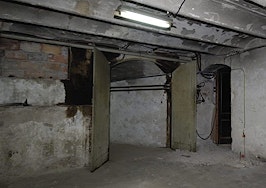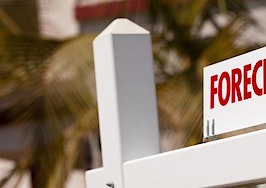- People are more aware of the environment, and they want to do their part in improving it.
- Many people make green home improvements or buy certified homes to reduce their carbon footprint, but they may not be making the impact they think they are.
- There are more cost-effective ways, such as buying green electricity, that make a bigger impact than having a certified home. To stay relevant, certification programs need to have stricter base standards.
In recent years, people have become increasingly concerned about the environment and climate change. One major factor linked to climate change is the carbon dioxide emissions that come from everyday human activities, such as driving our cars or operating our homes.
For those who are new in their environmental awareness, one of the first things they look to change is their home, whether it’s through home improvements, such as installing energy-efficient appliances and solar panels, or moving into a new, environmentally certified home.
In addition to helping Mother Earth, these homeowners are looking to help their pockets by benefiting from the often-touted savings that these upgrades provide.
But, are homeowners and homebuyers truly making the change they think they are?
[Tweet “Are homeowners truly making the change they think they are when they buy certified homes?”]
‘It ain’t easy being green’
In honor of Earth Day, Trulia released its “It Ain’t Easy Being Green,” study that highlights the gap between awareness of environmental issues and actually doing something about it.
According to the study, 73 percent of Americans strongly agree that they are environmentally conscious and consider the environment in their actions at least once a day.
Out of that group, 56 percent believe buying energy efficient appliances are the best way to improve the environment, 53 percent believe in making energy efficient home upgrades and 38 percent believe walking, riding bikes or taking public transportation is the way to go.
These options are the most expensive, to most people’s surprise and chagrin, also the least impactful out of all the opportunities available.

Environmentally certified homes: What’s the price tag?
Martin John Brown, a researcher and consultant on the environment and housing, did his own study, “The green ‘premium’ for environmentally certified homes: a meta-analysis and exploration.”
His research analyzed existing studies about the premium for certified homess worldwide. It also looked at the possible sources of value behind the premium by taking a sample of 43 owners of certified homes in his hometown of Portland, Oregon.
According to Brown, homeowners in Portland approximately pay an extra $890 per year for a certified home, but when it comes down to it, their actual energy savings are around $300.
[Tweet “Homeowners pay an extra $890 per year for a certified home, to save $300.”]
“Even starker was the relatively small impact of certified housing in terms of climate mitigation (about 4 percent of an average household’s carbon footprint), and its small value in the market ($24 on average),” the study noted.
Increased comfort at a cost
So, why do homeowners continue to spend extra money on certified homes?
Martin says it comes to the increased comfort that energy-efficient appliances and home-building practices bring. “Homeowners say their homes are more comfy, there are no drafts, and it’s more quiet due in part to some of the things needed to get the home certified,” Brown says.
Moreover, he points out that the average homeowner isn’t necessarily doing the research to know the true impact of the certification they’re paying for.
Brown says there are more cost-effective options that have a higher impact on the environment. For example, homeowners would only pay around $20 per ton (of mitigated carbon) for green electricity — a much cheaper option than paying an extra $890 per year for a certified home.
Home builders are incorporating green building practices into non-certified homes, Brown added, and typically, certified homes (with the lowest level of certification) are only a 15-percent improvement from standard building codes.
To stay relevant, Brown suggests that LEED, EnergyStar and other programs implement stricter energy standards at their lowest level of certification.
He says that homeowners shouldn’t totally shun the certification process, which could be helpful when it comes time to sell, but they should be aware that they’re not completely eliminating their carbon footprint.





